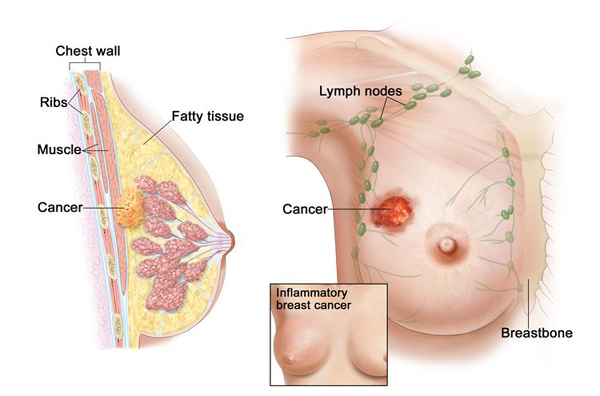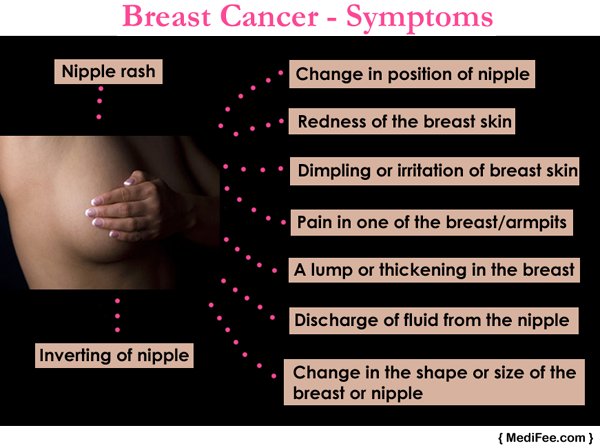Breast cancer is a most common and deadly disease that affects many women globally. The disease has proven its continued presence in India. So if there is a time to get educated about breast cancer, if you’re not already, it’s now.
How is breast anatomy affected by cancer? 
Breast cancer initiates in the breast’s cells. The abnormal cells multiple rapidly and sometimes spread to other parts of your body. The cancer begins in the breast tissue and the surrounding milk ducts and glands. Breast cancer usually begins with a small lump or tumor that then spreads through the body. An important note here is that men can develop breast cancer too; just its presence is not as common as that in women.
The cancer can be malignant or benign. If it is benign then the tumor is not cancerous and can be removed with surgery. But if it is malignant, then cancer treatment needs to start as soon as possible.
What are the early symptoms that you should watch out for?
- The first obvious symptom that you should watch out for is lumps in your breast. As discussed earlier, this is the physical presence of a tumor or cancer cells that have accumulated. Get a thorough breast examination for lumps done. If any anomalies and accumulated tissue are found, visit your doctor immediately. The lump may range from small to large size.
- If your breast has been tender, it can be a sign of a lump in your breast
- A shape change in your breast. Though most tumors can be detected as lumps, sometimes a lump changes the shape of your breast.
- If your nipple is discharging fluids that are clear or even bloody, it could be a side effect of tumor
- Swelling in the armpit is also often a sure symptom
- Watch your nipple for any changes such as swelling, retraction or dimpling
Diagnosis and testing:
If any of the above signs are noticed, you should schedule an appointment for a mammogram immediately. A mammogram works like an X ray, but immediately detects presence of tumor. 
Usually a breast cancer exam at home can start at an age as early as 20. For breast cancer, a regular screening test goes miles in early diagnosis and cure. An annual medical screen test can begin at the age of 35. If you fall in the risk factor zone of breast cancer, which means if you have a history of cancer in your family, then screening and testing should be done every year.
If there is a lump found in a self examination, or one performed in a clinic, a biopsy is often recommended. Biopsy, a procedure where a part of the affected tissue is removed from the body, will allow the doctor to understand whether the tumor is cancer causing or not.
Apart from a mammogram, a breast cancer ultrasound can also be prescribed. It usually detects the presence of a cyst which is a fluid filled space that is not cancerous and can be retracted using a needle. Another way of testing is performing an MRI test, though it is not a very effective way of testing, since it may miss out on some calcium remains that are cancerous.
What can you do to prevent breast cancer?
Cancer still remains a mystery, but doctors have narrowed down some causes that may speed up the cancerous cells to grow.  Some of the important causes are:
Some of the important causes are:
- If you have a family history of breast cancer, you’re likely to be affected too. You are then two to three times more likely to develop cancer.
- Early menstruation and late pregnancy are also included in the factors that can help predict cancer
- If you’re obese or overweight, the chances of contracting breast cancer increase
- Smoking and alcohol consumption
- Unhealthy lifestyle
Surgery or therapy through medication are the known treatments for breast cancer. Surgery can include removal of the whole (mastectomy) or a part of (lumpectomy) the breast. A number of women opt for artificial reconstruction of the breast after surgery. Chemotherapy and monoclonal antibodies are the medical therapies that are recommended by doctors.

Educative material.